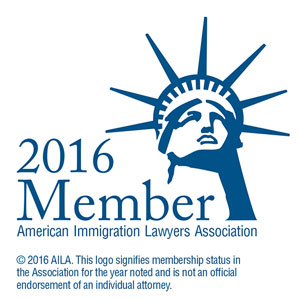DHS Reverses Course, Restores Student SEVIS Records—But Future Remains Uncertain
In the wake of a wave of dozens of lawsuits and emergency court orders following sudden revocations of the visas of foreign students and scholars and deletion of thousands of Student and Exchange Visitor Information System (SEVIS) records by the Department of Homeland Security (DHS) without notice or explanation, which have thrown foreign students’ lives into chaos, the agency suddenly reversed course on April 25, 2025, and restored many foreign students’ SEVIS records, along with their legal status.
The administration sent out mixed signals, however, as DHS officials were quoted as saying that this action was temporary while the agency worked on a new, unspecified policy. Tricia McLaughlin, a DHS spokesperson, said, “We have not reversed course on a single visa revocation. What we did is restore SEVIS access for people who had not had their visa revoked.” A statement from a government attorney in one of the lawsuits said, “ICE is developing a policy that will provide a framework for SEVIS record terminations. Until such a policy is issued, the SEVIS records for plaintiff(s) in this case (and other similarly situated plaintiffs) will remain Active or shall be re-activated if not currently active and [U.S. Immigration and Customs Enforcement] will not modify the record solely based on the NCIC finding that resulted in the recent SEVIS record termination.”
“It is good to see ICE recognize the illegality of its actions canceling SEVIS registrations for these students. Sad that it took losing 50 times. What we don’t yet know is what ICE will do to repair the damage it has done, especially for those students who lost jobs and offers and had visas revoked,” said Charles Kuck, an attorney for some of the foreign student plaintiffs. Some affected students have already left the United States, while others are in hiding or not attending class, according to reports.
Colleges and universities have had to deal with the uncertainty and other effects of these actions on their students, scholars, and programs; their ability to conduct research; and concerns about whether U.S. universities will be able to attract top talent in the future.
Although many students can heave a sigh of relief and return to their classrooms, not all the terminations have been restored, and we know students in F-1 status waiting with baited breath for similar positive action.
My colleague Jeff Joseph, ponders in a LinkedIn post:
“What remains unresolved, unfortunately, is the shrapnel that remains from this illegal action:
(1) SEVIS has been restored, but the visas were also revoked as a result of the illegal SEVIS termination, and , guess what? Visa revocations are NOT subject to judicial review, so there may be no way to challenge that (although I am looking for brilliant minds to brainstorm with me on this);
(2) The only way to challenge the visa revocation is in removal proceedings, but it is not entirely clear how a student would challenge a DOS determination in immigration court. The jurisdiction of the judge over a DOS determination is not entirely clear;
(3) When your visa is revoked, you become deportable. So, all 4,700 of these students are still subject to arrest, transfer to Louisiana or Texas, detention, and deportation; unless we can figure out how to resolve number 3 above, this problem will haunt these students;
(4) It is great that ICE is creating a policy about how and when they can terminate SEVIS and all, but that, itself, is illegal. ICE can’t create rules that moderate conduct and create penalties without doing so through formal rulemaking and notice and comment. So, creating this policy may solve part of the TROs, but attorneys will just amend the complaints to challenge the rulemaking power of the agency as well as the fact that it is ultra vires to when ICE is allowed to terminate status in the statute. They can’t create new reasons to terminate status that are not statutory;
(5) Is SEVIS status or not? ICE has taken inconsistent positions on this in litigation and in their own public facing guidance and in prior litigation. The Courts want to know. DSOs want to know. Employers want to know. Students want to know; and
(6). Will the period between when the students registrations terminated and now considered lawful status? If not, that would impact future applications for change of status. Will USCIS recognize what ICE does in SEVIS and honor the reinstatement of status nunc pro tunc?
As you can see, we stopped the bleeding, but still need to deal with the surgery.”




